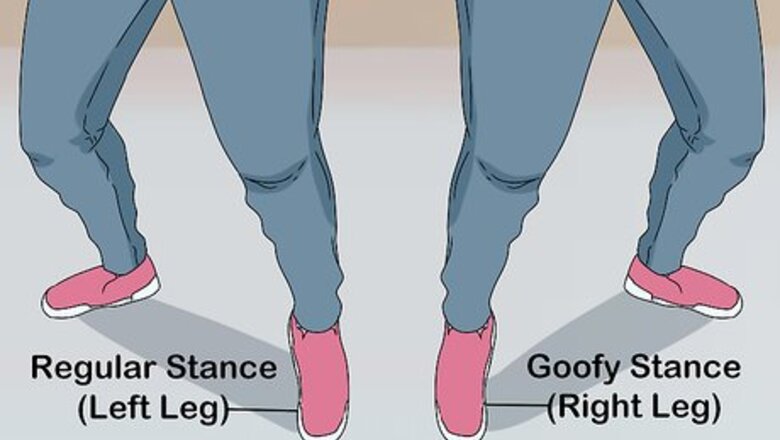
views
- If you prefer to lead with your left leg, your stance will be considered a “regular” stance, while leading with your right leg will be considered a “goofy” snowboarding stance.
- Wear the appropriate gear, such as a helmet, a snowboard that matches your stance, bindings, wrist guards, and goggles or sunglasses.
- In the winter months, start practicing on small slopes. Keep your eyes where you want to go to control your board and shift your weight to turn.
Staying Safe
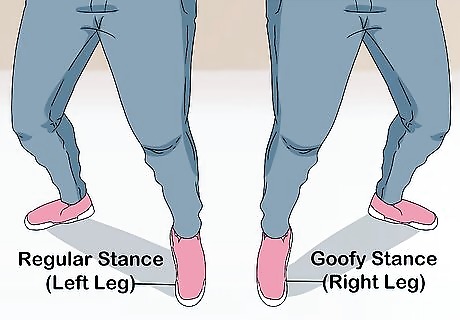
Find your stance. Before you can get started with snowboarding you will need to find which stance you are most comfortable with. There are two main styles of standing on the snowboard, both of which are based on your naturally preferred leading leg. Find your dominant leg and plan on using the stance that matches it. If you prefer to lead with your left leg your stance will be considered a “regular” stance. If you prefer to lead with your right leg your stance will be considered a “goofy” stance. If you have a skateboard, then the leg which you push the skateboard with will be the one that will be in the front. Think about which leg you use first when putting your pants on. Chances are that leg will be your lead leg.

Wear the right gear. Part of staying safe during your snowboarding sessions will require you to wear the best protective gear you can. Wearing protective gear will help shield you from any injuries that can come with falls, collisions, and the cold. Helmets should always be worn, no matter how skillful you are at snowboarding. You will need a snowboard that matches your stance. A good pair of snowboarding boots will help protect your feet and ankles. You will need bindings to properly attach the board to your feet. Goggles or sunglasses can help keep the sun and snow out of your eyes. Wrist guards can help protect your wrists from injury during a fall while you are learning how to snowboard.
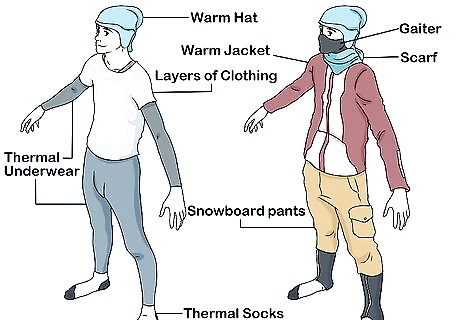
Wear the proper clothes. Because snowboarding necessarily takes place in cold temperatures, you should equip yourself with adequate cold-weather gear. Some essentials include: Having a warm hat that fully covers your head and ears will help keep you warm. Try wearing thermal socks and underwear. Have a warm jacket. Many snowboarders like to wear down jackets. Wearing a scarf or gaiter can help keep your neck warm. Snowboard pants can help keep you warm and are generally water-resistant. Wearing layers of clothing can help keep you warm.
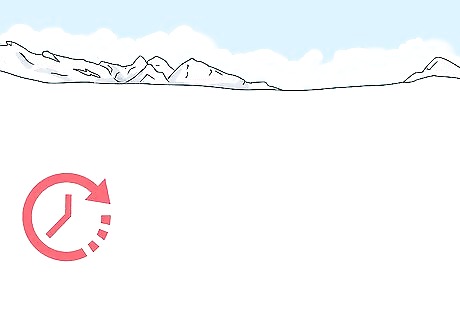
Wait for the right snow. Not all snow is equally suitable for snowboarding. Some types of snow can be more difficult and dangerous to snowboard in. When learning to snowboard always check weather and snow forecasts to make sure you practice in the optimal type of snow. Frozen or icy snow can be difficult and dangerous to learn in. This type of snow will have a layer of ice that is hard and compact compared to the ideal powdery snow. Fresh powdery snow is the ideal type for beginners to practice in. This snow will be loose and not compacted, easily moving under your board. Check the weather forecasts for the slopes that you plan on visiting.
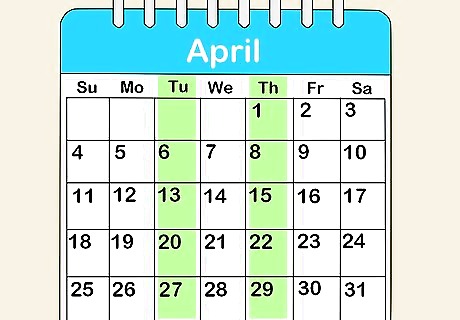
Try going midweek. Ski and snowboard slopes and resorts can be popular places during the winter season. The more people that are on the slopes the more difficult the environment becomes when learning how to snowboard. Try going midweek to avoid large crowds, giving you plenty of open space to learn in.
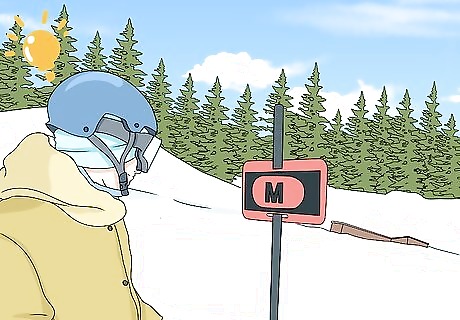
Learn the terrain and trails. Before you hit the slopes for the first time it can be a good idea to learn the trails. Knowing what to expect and which trails or areas to avoid can help you stay safe as you practice your skills. Always take a few moments to orient yourself before snowboarding in a new area. Pay attention to any signs that the course has placed. Knowing the beginner routes can help keep you out of dangerous situations.
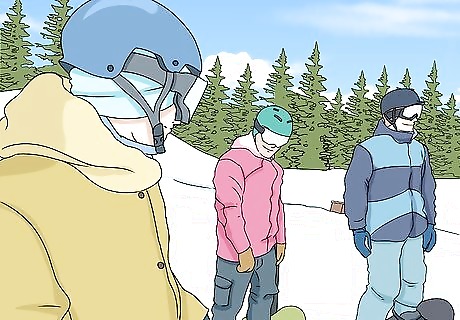
Think about going with a friend. Snowboarding with a friend can be more enjoyable and make it a safer experience for a beginner. Try asking a friend who has some experience with snowboarding to come with you, offering to supervise you and maybe teach you a few techniques. Even if your friends are all beginners, having partners can make your first trip snowboarding a safer one.

Learn how to strap into your snowboard. Your snowboard will have two areas that your feet will strap into. These areas are called bindings and there are a few different styles of bindings available. However, many bindings will have some common elements to them that you should become familiar with. Bindings will have a back plate that will support your ankle and the rear of your boot. Most bindings will have a strap at the top that covers the upper portion of your boot. It's common for bindings to have an additional strap at the bottom which will secure your toes to the board. Always make sure to fully tighten the straps to your boots to ensure you are safely secured to your board.
Controlling Your Movements
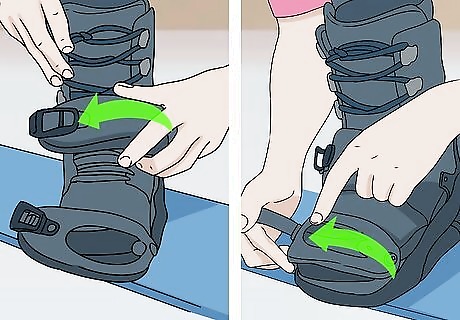
Start moving. Before you can work on snowboarding down any large slopes you should practice simple motions with your board. The first technique you might want to learn is how to “skate” with your snowboard. Practice the following motions in a relatively flat area to “skate” your board and get a feel for the moving with your board: Strap your front foot onto your board. Leave your rear foot out of the bindings. Push with your rear foot like you would using a skateboard. You will begin to move forward and can put your rear foot back in the binding.
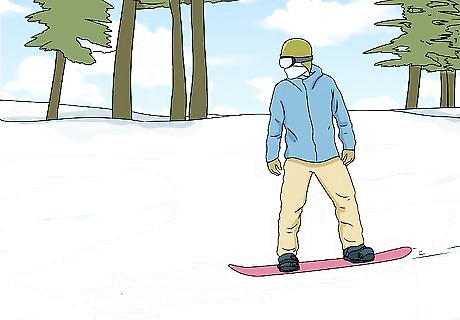
Find a safe area to get started. Many ski and snowboarding resorts will have areas specifically designed with the beginner in mind. When you are ready to try and go down a slope always look for slopes that are marked for beginners as this will help keep you and other snowboarders safe as you learn. Beginner slopes will be very small in size. Most beginner courses will have very gradual slopes that will let you move slowly and maintain control.
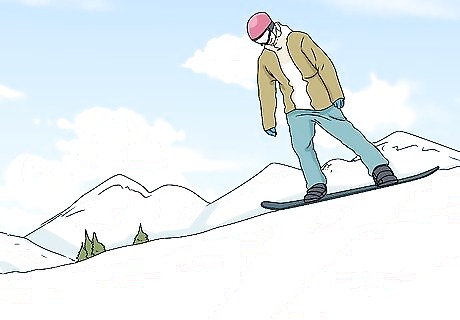
Start practicing on small slopes. Once you get a feel for skating your board you can move on to tackling small slopes. Find the beginner courses or areas at your ski resort and start practicing what it feels like to go downhill successfully. Start on a very small slope or hill when first attempting snowboarding. Keep your point of balance low by slightly crouching. Try to lean onto your front leg instead of your rear. Avoid leaning too far to one side or the other. Don't be afraid to use your arms to keep yourself balanced. Be ready to fall. Try to spread your weight out over your entire body if you need to fall.
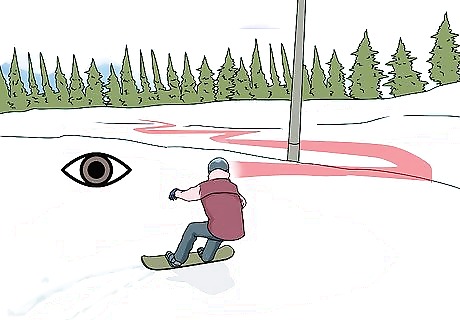
Keep an eye on where you want to go. Although you should have a good awareness of your total surroundings, keeping your eyes directly on where you want to go will help you control your board. Keep in mind that wherever you are looking your body and board will tend to steer towards.
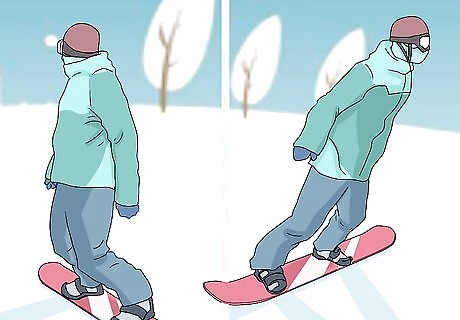
Shift your weight. A key part of maneuvering your board while you are snowboarding is managing your body weight. You will need to properly shift your weight to turn and stabilize your board. Practice moving your weight while going downhill to get a better feeling of where your weight needs to be when maneuvering your snowboard. Many times your weight will be on your heels, especially when you are going straight. When turning you will need to shift your weight in the direction you want to turn. It can help to swing your arms to add extra weight and momentum to your turn. Commit to the motion. Leaning only a little bit will simply put you off balance and cause you to fall.
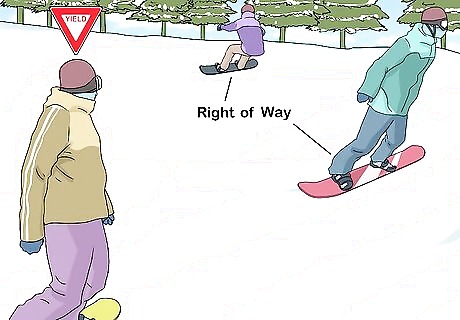
Yield the right of way. You must pay attention to those around you when snowboarding. Part of controlling your board is maneuvering safely around other people enjoying their time on the slope. Knowing the rules of who has right of way on the course can help keep everyone safe. Anyone in front of you has right of way over you. Running into anyone in front of you would be considered your fault. If you need to pass someone close by you should announce which side you are passing on. Never stop on the hill or in a place that would make it hard to see.

Learn to fall. Part of learning how to control your movements while snowboarding involves learning to fall. When beginning your practice you can expect to fall. Learning how to fall properly can help you prevent injury and keep you practicing safely. The most common injury will be to your wrists and hands when falling. Making a fist when you fall can help prevent your hands from bending too far backward. Try to spread the force of the fall throughout your whole body instead of a single area.
Building Your Skills
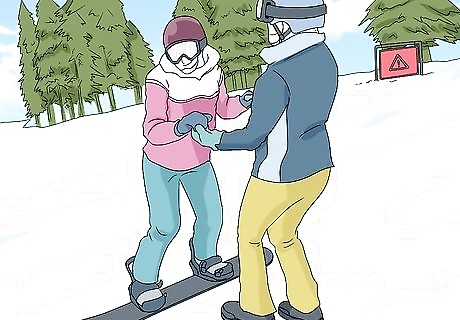
Take lessons. One of the best ways that you can quickly and effectively learn how to snowboard is to take some lessons. Professional instructors are available and can offer their teaching and training techniques to you. Look around your local ski or snowboard courses for either group or personal training lessons to get a good head start with your snowboarding skills.
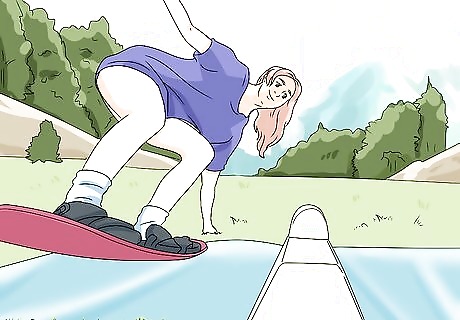
Practice often. Part of learning any skill is getting in enough practice. Regular practice can help you to maintain your skills and to improve them. Try to get at least some practice in daily to maximize the benefits of your work. Even at home, you can practice strapping into the board and shifting your weight. Taking your board out into your backyard can allow you to practice basic techniques. Going to the slopes as often as you can gives you the best opportunity to practice your skills.

Commit and stay positive. Learning a new skill can be difficult and snowboarding is no exception. When you first begin you may fall often, have a tough time staying upright for a large distance, and maybe be surrounded by people who seem to be doing very well. Don't let yourself get discouraged when first learning how to snowboard and keep enjoying your practice time.
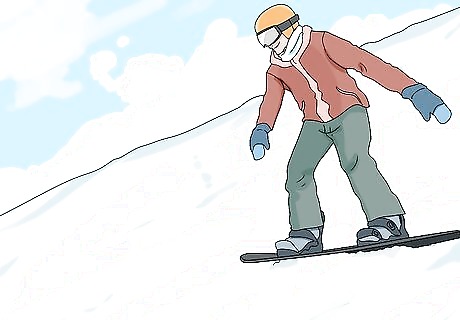
Start building up your skill. Once you feel comfortable on the beginner slopes you can start trying more advanced courses. You might also try to increase your speed. Constantly work to develop your skills and comfort level by snowboarding more challenging slopes. Work slowly when attempting more difficult courses. Try to increase your speed gradually over time. Don't be in a hurry to snowboard faster. Always keep your safety in mind when trying some new aspect of snowboarding.
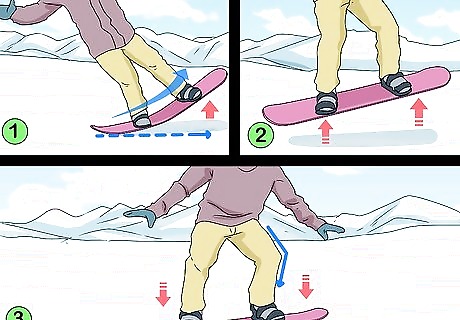
Learn some basic tricks. Once you start to learn the basic movements and skills of snowboarding you can start to learn some tricks. Start by learning some of the simpler tricks, allowing yourself time to work up to more difficult or potentially dangerous moves. Try some of the following tricks to get started: Do a wheelie by first leaning back on your rear leg. Lift your front foot and the nose of the board. Hold this position, keeping your balance before lowering the nose of your board. To perform an ollie crouch down and lean back on your rear leg. Pull your front leg up, lifting the board into the air, and begin to move your back leg up to meet it. Land with your board's nose first and use your knees to absorb the impact.















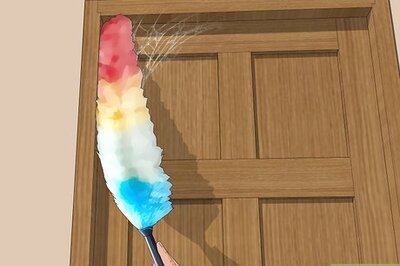


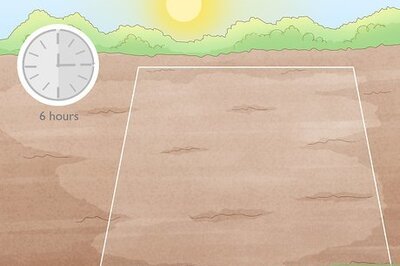
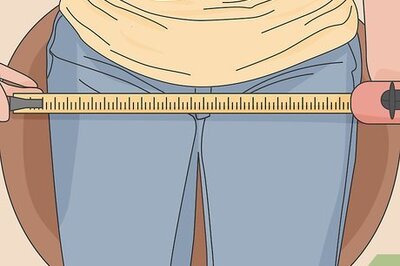
Comments
0 comment